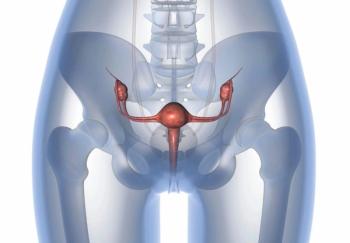
- ONCOLOGY Vol 15 No 12
- Volume 15
- Issue 12
Modulation of Dose Intensity in Aerodigestive Tract Cancers: Strategies to Reduce Toxicity
Dr. Rich and colleagues present a compelling argument for the manipulation of temporal and spatial treatment parameters in chemoradiation programs. In essence, the authors address the shielding of normal tissues from the effects of cytotoxic agents. With respect to radiotherapy, this can be achieved via physical shielding by computer-generated dose algorithms using elaborate new planning technology (eg, intensity-modulated radiation therapy [IMRT]), chemical shielding with radioprotectants (eg, amifostine [Ethyol]), or temporal shielding by altered-fractionation schemes that exploit the differential alpha/beta ratios between tumor and normal tissue (eg, hyperfractionation).
Dr. Rich and colleagues present a compelling argumentfor the manipulation of temporal and spatial treatment parameters inchemoradiation programs. In essence, the authors address the shielding of normaltissues from the effects of cytotoxic agents. With respect to radiotherapy, thiscan be achieved via physical shielding by computer-generated dose algorithmsusing elaborate new planning technology (eg, intensity-modulated radiationtherapy [IMRT]), chemical shielding with radioprotectants (eg, amifostine [Ethyol]),or temporal shielding by altered-fractionation schemes that exploit thedifferential alpha/beta ratios between tumor and normal tissue (eg,hyperfractionation).
Chronomodulated Administration
With regard to chemotherapy, the authors explore the concept of temporallyshielding normal tissue by chronomodulation of administration schedules based oncircadian cell-cycle rhythms. Potential benefits include dose escalation and acorresponding reduction in acute and late side effects by maximizing thetolerance of normal tissues to antineoplastic agents. As the authors point out,chronomodulated intravenous infusion of fluorouracil (5-FU) has been used in thetreatment of various gastrointestinal malignancies for some time.
Further exploitation of this principle to incorporate other cytotoxic agentsand tumor sites carries the potential for significant gain, and continuedinvestigation is certainly warranted. As Rich et al have noted, the prospectbecomes even more attractive when cost is considered, especially compared withthe exorbitant price tags associated with cutting-edge refinements in diagnosticand therapeutic radiology.
Hyperfractionated Radiation Schedules
Alterations in temporal dose sequencing have been explored in detail forradiation therapy fractionation schemes.[1-9] At the University of Florida,hyperfractionated radiation schedules have been used since 1978 to treatmalignancies of the head and neck and other sites.[10-14] Advances in physicalshielding have moved away from traditional parallel-opposed blocked fields tononcoplanar stereotactic setups using sophisticated planning software. We havealso gradually shifted to ipsilateral wedge-pair setups for certain lateralizedhead and neck malignancies, with a resultant sparing of contralateral salivarytissues.
Patient selection for this method continues to evolve, the critical conceptbeing that normal tissue excluded from the treatment volume is at low risk ofharboring subclinical disease.[15] More recently, IMRT has been used forselected lesions. Tumor volumes are carefully outlined using three-dimensional(3D) computed tomography (CT) planning with intravenous contrast. Typically, theclinical tumor volumes for 50 Gy and 70 Gy are defined with selective sparing ofthe spinal cord, salivary glands, and any other critical structures in which ahigh radiation dose is undesirable.
Spatial Manipulation in Radiation Treatment Planning
Strict adherence to anatomic landmarks and precise tumor mapping are criticalin ensuring adequate coverage of the primary tumor and nodal compartments atrisk. Numerous potential pitfalls have been addressed in recent publicationsdealing with this issue.[4,16-22] Although inherent possibilities of increasedtumor control with greater sparing of adjacent normal tissue abound with thisnew technology, we agree that its expense and complexity preclude it from rapidacceptance into many community radiation therapy practices.
The coming decade will likely witness tremendous refinements in this type ofspatial manipulation in radiation treatment planning. Corresponding advancesanticipated by Rich et al in temporal adjustments of systemic treatmentstrategies offer exciting possibilities when viewed in conjunction with theanticipated strides in IMRT and altered radiation fractionation schemes.
Our experience in using paclitaxel (Taxol) concomitantly with radiation totreat upper aerodigestive, lung, and chest wall malignancies has been mixed,especially when the radiation is administered twice daily. Mucositis,esophagitis, and skin desquamation have been noticeably more severe with thisstrategy, often to the point that treatment breaks become necessary. Althoughthese effects could potentially be ameliorated with amifostine, as noted by Richet al, the cost and complexity of daily intravenous administration have thus farprecluded its use in our department. We have found pilocarpine (Salagen) to beeffective in decreasing the severity of radiation-induced xerostomia for amodest percentage of patients, although a once-daily dosage schedule would makeits long-term use more feasible.
Conclusions
In summary, we salute the insightful perspective offered by Rich et al on thepresent and future possibilities of normal-tissue sparing with a variety oftemporal and spatial modifications of antineoplastic therapy. We share theirhope that continued advances in these areas will translate into more cures withfewer undesirable treatment sequelae.
References:
1. Horiot JC, Bontemps P, van den Bogaert W, et al: Accelerated fractionation(AF) compared to conventional fractionation (CF) improves locoregional controlin the radiotherapy of advanced head and neck cancers: Results of the EORTC22851 randomized trial. Radiother Oncol 44:111-121, 1997.
2. Mehta MP, Tannehill SP, Janjan NA, et al: Phase II trial ofhyperfractionated accelerated radiation therapy for nonresectable non-small-celllung cancer: Results of Eastern Cooperative Oncology Group 4593. J Clin Oncol16:3518-3523, 1998.
3. Pisters PW, Abbruzzese JL, Janjan NA, et al: Rapid-fractionationpreoperative chemoradiation, pancreaticoduodenectomy, and intraoperativeradiation therapy for resectable pancreatic adenocarcinoma. J Clin Oncol16:3843-3850, 1998.
4. Butler EB, Teh BS, Grant WH 3rd, et al: SMART (simultaneous modulatedaccelerated radiation therapy) boost: A new accelerated fractionation schedulefor the treatment of head and neck cancer with intensity modulated radiotherapy.Int J Radiat Oncol Biol Phys 45:21-32, 1999.
5. Mendenhall WM, Stringer SP, Amdur RJ, et al: Is radiation therapy apreferred alternative to surgery for squamous cell carcinoma of the base oftongue? J Clin Oncol 18:35-42, 2000.
6. Bernier J, Denekamp J, Rojas A, et al: ARCON: Accelerated radiotherapywith carbogen and nicotinamide in head and neck squamous cell carcinomas. Theexperience of the Cooperative Group of Radiotherapy of the European Organizationfor Research and Treatment of Cancer (EORTC). Radiother Oncol 55:111-119, 2000.
7. Fu KK, Pajak TF, Trotti A, et al: A Radiation Therapy Oncology Group (RTOG)phase III randomized study to compare hyperfractionation and two variants ofaccelerated fractionation to standard fractionation radiotherapy for head andneck squamous cell carcinomas: First report of RTOG 9003. Int J Radiat OncolBiol Phys 48:7-16, 2000.
8. Herskovic A, Fisher J, Orton B, et al: Accelerated hyperfractionation inpatients with non-small-cell bronchogenic cancers as a cost-effective anduser- and patient-friendly schedule. Cancer Invest 18:537-543, 2000.
9. Herskovic A, Scott C, Demas W, et al: Accelerated hyperfractionation forbronchogenic cancer: Radiation Therapy Oncology Group 9205. Am J Clin Oncol23:207-212, 2000.
10. Mendenhall WM, Amdur RJ, Siemann DW, et al: Altered fractionation indefinitive irradiation of squamous cell carcinoma of the head and neck. CurrOpin Oncol 12:207-214, 2000.
11. Mendenhall WM, Parsons JT: Altered fractionation in radiation therapy forsquamous-cell carcinoma of the head and neck. Cancer Invest 16:594-603, 1998.
12. Morgan L, Chafe W, Mendenhall W, et al: Hyperfractionation ofwhole-abdomen radiation therapy: Salvage treatment of persistent ovariancarcinoma following chemotherapy. Gynecol Oncol 31:122-136, 1988.
13. Parsons JT, Mendenhall WM, Cassisi NJ, et al: Hyperfractionation for headand neck cancer. Int J Radiat Oncol Biol Phys 14:649-658, 1988.
14. Parsons JT, Mendenhall WM, Stringer SP, et al: Twice-a-day radiotherapyfor squamous cell carcinoma of the head and neck: The University of Floridaexperience. Head Neck 15:87-96, 1993.
15. O’Sullivan B, Warde P, Grice B, et al: The benefits and pitfalls ofipsilateral radiotherapy in carcinoma of the tonsillar region. Int J RadiatOncol Biol Phys 51:332-343, 2001.
16. Eisbruch A, Kim HM, Terrell JE, et al: Xerostomia and its predictorsfollowing parotid-sparing irradiation of head-and-neck cancer. Int J RadiatOncol Biol Phys 50:695-704, 2001.
17. Chao KS, Deasy JO, Markman J, et al: A prospective study of salivaryfunction sparing in patients with head-and-neck cancers receivingintensity-modulated or three-dimensional radiation therapy: Initial results. IntJ Radiat Oncol Biol Phys 49:907-916, 2001.
18. Gregoire V, Coche E, Cosnard G, et al: Selection and delineation of lymphnode target volumes in head and neck conformal radiotherapy. Proposal forstandardizing terminology and procedure based on the surgical experience.Radiother Oncol 56:135-150, 2000.
19. Dawson LA, Anzai Y, Marsh L, et al: Patterns of local-regional recurrencefollowing parotid-sparing conformal and segmental intensity-modulatedradiotherapy for head and neck cancer. Int J Radiat Oncol Biol Phys46:1117-1126, 2000.
20. Eisbruch A, Marsh LH, Martel MK, et al: Comprehensive irradiation of headand neck cancer using conformal multisegmental fields: Assessment of targetcoverage and noninvolved tissue sparing. Int J Radiat Oncol Biol Phys41:559-568, 1998.
21. Nowak PJ, Wijers OB, Lagerwaard FJ, et al: A three-dimensional CT-basedtarget definition for elective irradiation of the neck. Int J Radiat Oncol BiolPhys 45:33-39, 1999.
22. van Dieren EB, Nowak PJ, Wijers OB, et al: Beam intensity modulationusing tissue compensators or dynamic multileaf collimation in three-dimensionalconformal radiotherapy of primary cancers of the oropharynx and larynx,including the elective neck. Int J Radiat Oncol Biol Phys 47:1299-1309, 2000.
Articles in this issue
almost 24 years ago
Bill Would Increase NCI Research on Blood Cancersalmost 24 years ago
American Cancer Society Launches New and Improved Websitealmost 24 years ago
A Breast Cancer Journeyalmost 24 years ago
Exisulind Significantly Inhibits Tumor Growth With Minimal Side Effectsalmost 24 years ago
FDG-PET Detects Thyroid Cancer Better Than Conventional Imagingalmost 24 years ago
DEA Head Stresses Legitimate Need for Pain Medicationalmost 24 years ago
Docetaxel Combination Produces 2-Year Survival Advantage in NSCLC Patientsalmost 24 years ago
Survey Finds Women Have Many Misperceptions About Breast CancerNewsletter
Stay up to date on recent advances in the multidisciplinary approach to cancer.



















































































